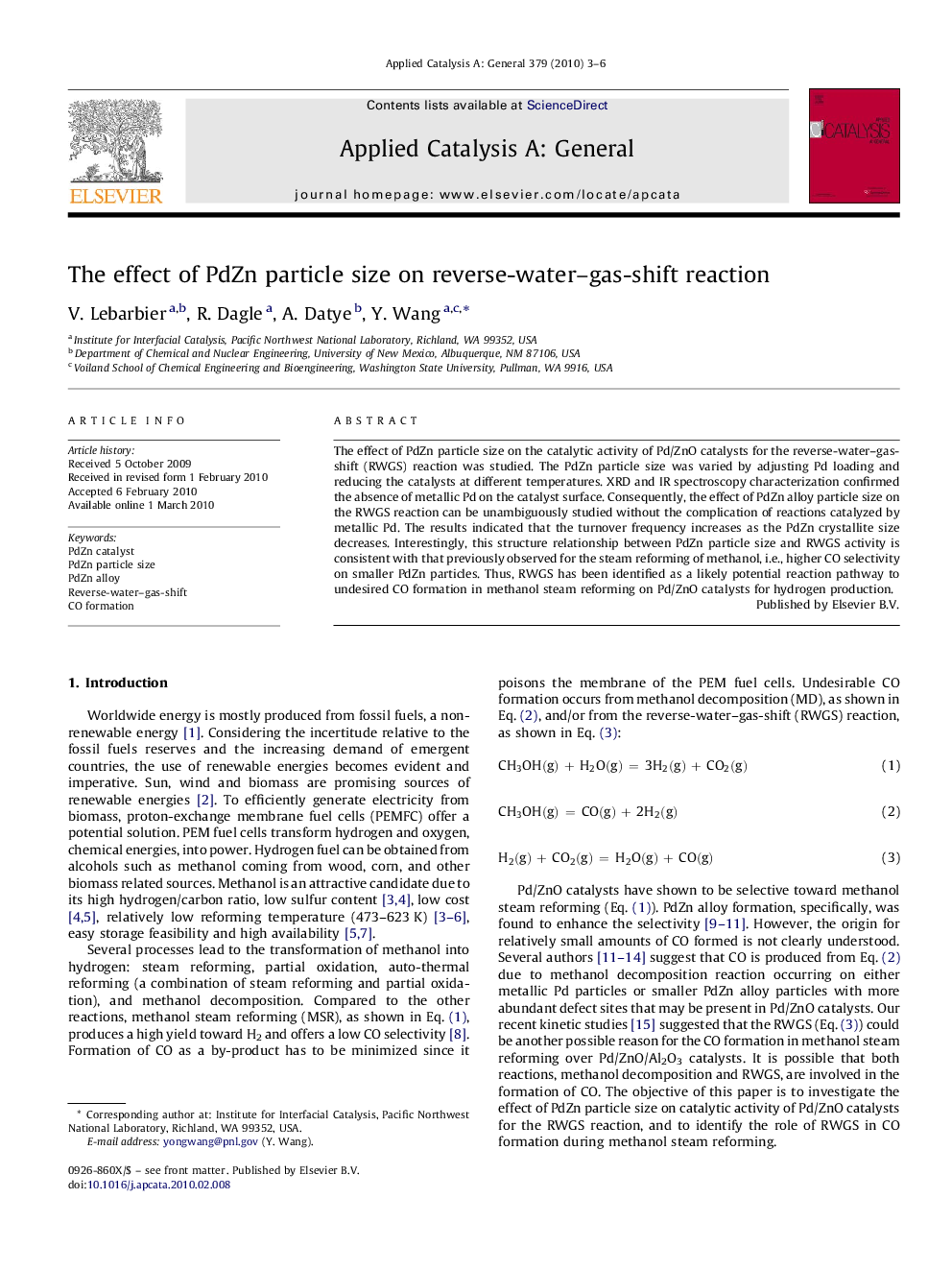| Article ID | Journal | Published Year | Pages | File Type |
|---|---|---|---|---|
| 42161 | Applied Catalysis A: General | 2010 | 4 Pages |
The effect of PdZn particle size on the catalytic activity of Pd/ZnO catalysts for the reverse-water–gas-shift (RWGS) reaction was studied. The PdZn particle size was varied by adjusting Pd loading and reducing the catalysts at different temperatures. XRD and IR spectroscopy characterization confirmed the absence of metallic Pd on the catalyst surface. Consequently, the effect of PdZn alloy particle size on the RWGS reaction can be unambiguously studied without the complication of reactions catalyzed by metallic Pd. The results indicated that the turnover frequency increases as the PdZn crystallite size decreases. Interestingly, this structure relationship between PdZn particle size and RWGS activity is consistent with that previously observed for the steam reforming of methanol, i.e., higher CO selectivity on smaller PdZn particles. Thus, RWGS has been identified as a likely potential reaction pathway to undesired CO formation in methanol steam reforming on Pd/ZnO catalysts for hydrogen production.
Graphical abstractThe effect of PdZn particle size on the activity of Pd/ZnO catalysts for the reverse-water–gas-shift (RWGS) reaction was studied. The results indicated that the turnover frequency increases as the PdZn crystallite size decreases. Interestingly, this relationship is consistent with that previously observed for methanol steam reforming. Thus, RWGS was identified as a likely potential reaction pathway to undesired CO formation in methanol steam reforming on Pd/ZnO catalysts.Figure optionsDownload full-size imageDownload high-quality image (32 K)Download as PowerPoint slide
